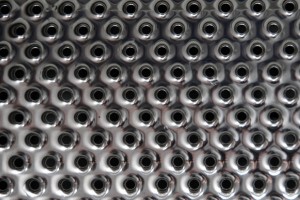A Quick Look at the Mechanics of a Washing Machine
Washing machines are part of our daily lives and for most of us they have been a common household appliance since we were kids. But how do they really work?
We know that at the end of a cycle we end up with fresh smelling washing and all of the dirt has magically disappeared so lets have a quick look at how washing machines work on the inside.
The first step is the one that we are most familiar with and that is filling the washing machine with clothes or other laundry. Keeping colours and whites separate and taking care not to overload the washing machine because we then know that the clothes will not be washed properly.
 You close the lid and turn on the machine and it will fill with water until it is full and then what is called the agitator will stir the clothes, which is what actually washes them.
You close the lid and turn on the machine and it will fill with water until it is full and then what is called the agitator will stir the clothes, which is what actually washes them.
Then the soapy water is drained and fresh water fills the tub. This time the agitator’s job is to rinse the clothes and once this is done the machine is once again drained of water and it spins to remove as much water from the clothes as possible.
Now lets have a look inside to understand why a washing machine is so heavy.
What’s under the hood
One of the things that makes it so heavy is the concrete block that is in place to balance the heavy electric motor which in turn moves the extremely heavy gearbox which is fastened to the inner tub that is made of steel.
Many washing machines are extremely heavy because of the weight of their components.
Washing machines generally have two steel tubs with the one inside is where you put your clothes. It has the agitator positioned in the middle and it has perforated sides where the water exits as it spins.
The external or outer tub actually seals in the water and is fixed to the frame of the washing machine. The inner tub is instead attached to the gearbox so that it is free to move during the wash and spin cycles without colliding with the rest of the washing machine.
The support system
There are three pulleys inside a washing machine to keep it balanced. They ensure that if one side of the frame moves up then the other side will travel down.
The cable and pulley system holds to weight of the internal components and allows them to move so that the entire machine does not vibrate uncontrollably.
There is also an internal damping system that absorbs a portion of the vibrations through the use of friction.
The damping system
Each of the four corners of a washing machine contains a mechanism that is quite similar to a disc brake on a car and in fact the purpose is similar as well. This mechanise pushes two pads against a metal plate that is fixed to the frame of the washing machine which helps to control the amount of vibration when the machine is operating.
For more information click here.
Leave a Comment
You must be logged in to post a comment.




